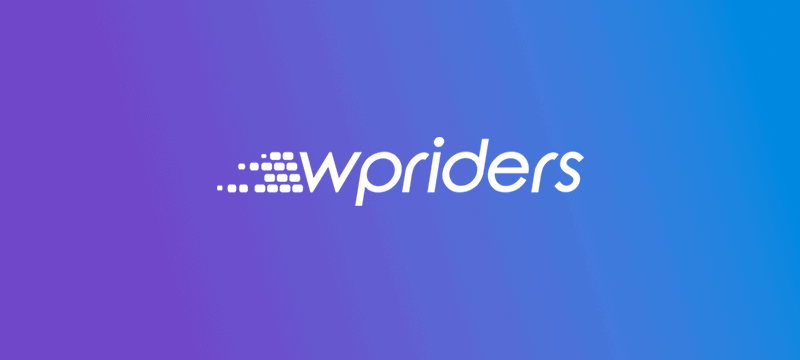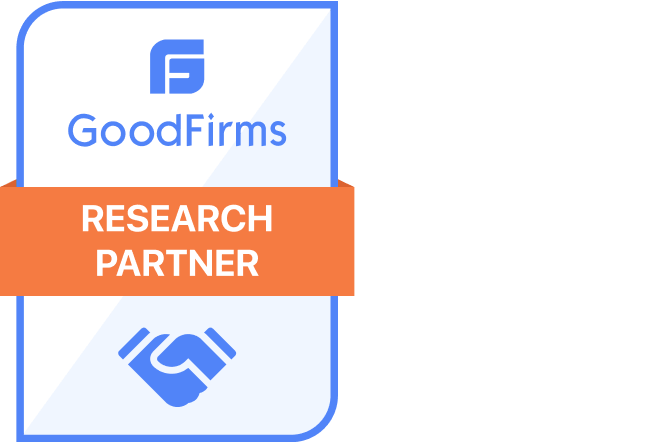TL;DR
LLM optimization (LLMO) is the Business Executives’ new SEO. It has two jobs:
- Technical tuning—fine-tuning, prompt engineering and inference tricks like KV caching cut latency & cloud spend by up to 50 % while boosting accuracy 25 %.
- Brand visibility—structured data, entity consistency and cited facts make ChatGPT-style tools quote you instead of rivals. Companies that align both fronts already shave 30 % off support load and dominate AI answer boxes.
Introduction
Your customers aren’t searching the way they used to. Right now, 52% of Gen Z and Millennials are choosing ChatGPT over Google when they want to explore and discover new things. That’s not just a temporary shift—it’s a complete rewrite of how people find, consume, and act on information.
Here’s what LLM optimization actually means for your business: you’re taking a general-purpose AI and turning it into a specialized tool that tackles your specific problems while creating better experiences for your users. Skip this step, and you’ll end up with systems that burn through your budget, crawl at frustrating speeds, and spit out wrong answers that could embarrass your brand. Consider this reality—these AI models now handle billions of queries every day, and just one incorrect mention of your company can ripple across global perception.
Think Strategic
The stakes keep climbing. AI Overviews now show up in over 13% of all desktop searches. That’s a massive 102% jump in just two months. This rapid shift explains why understanding LLM optimization isn’t something you can delegate entirely to your tech team anymore. Companies that get ahead of LLMO concepts now are positioning themselves to own digital mindshare in this new information landscape, securing real advantages in accuracy, efficiency, user experience, safety, and specialized capabilities.
You need a clear, strategic grip on how LLM optimization impacts your business.

What is LLM Optimization and Why It Matters
The numbers tell a clear story. Over the past year, 58% of consumers have started using AI platforms like ChatGPT, Gemini, and Perplexity for product and service recommendations. This represents a completely new battlefield for your brand’s digital visibility.
LLM optimization vs traditional SEO and AIO
Think of traditional SEO like competing for prime real estate on a busy street. You want your storefront (webpage) to appear first when people walk by (search). LLM optimization works differently. Instead of fighting for that top spot in search results, you’re trying to get mentioned in the AI’s actual answer.
Traditional SEO focuses on keywords, backlinks, and making sure search engines can crawl your site. LLM optimization cares more about semantic relevance, structured data, and authoritative mentions. It’s the difference between optimizing to be found versus optimizing to be recommended.
AI Optimization (AIO) works as the umbrella term covering all the ways you can use artificial intelligence to boost performance. Under that umbrella, you’ll find LLM optimization and Answer Engine Optimization (AEO) as two distinct approaches. AEO focuses on getting your content mentioned in AI search results, while LLM optimization digs deeper into how the models actually function and interpret your brand.
Two meanings: technical tuning vs brand visibility
Here’s where it gets interesting—LLM optimization means two completely different things depending on who you’re talking to.
The first definition is purely technical. It’s about making the AI models themselves run faster, more accurately, and better suited for specific tasks. This involves fine-tuning parameters, training on your proprietary data, and adjusting responses for compliance.
The second definition matters more to most business leaders. It’s about improving your brand’s presence, visibility, and authority within these AI systems. This marketing-focused approach ensures your brand shows up accurately when AI tools generate responses about your industry, products, or services.
Why Business Executives should care about LLM optimization
Your organization probably uses around 11 generative AI models right now, and you’re likely planning to expand that by about 50% over the next three years. Companies that implement optimization techniques like fine-tuning or prompt engineering are seeing model outputs that are roughly 25% more accurate than their competitors.
But here’s the bigger picture: these AI models are becoming gatekeepers. Users increasingly rely on them for information and recommendations, which means if your brand isn’t recognized by these systems, you risk disappearing from the channels where buying decisions start. Brand visibility in AI responses isn’t just a nice-to-have anymore—it’s becoming a strategic asset that could determine your competitive position.

How LLMs Work and What Influences Their Outputs
LLMs might look like magic boxes that somehow understand language, but knowing how they actually tick gives you the context you need to optimize them effectively.
Training data and model architecture
Think of an LLM as a massive pattern-recognition system built on transformer-based neural networks with billions of parameters. These systems learn language patterns from enormous datasets. Modern LLMs don’t just memorize words—they convert them into multi-dimensional vectors (word embeddings) that capture semantic relationships, placing similar concepts close together in vector space. During training, these models keep adjusting their parameter values until they can correctly predict the next token in a sequence, essentially learning language patterns through self-supervised learning.
Your model’s performance hinges entirely on training data quality. LLMs absorb information from books, websites, and academic papers that go through intensive cleaning to strip out duplicates, noise, and harmful content. This preprocessing stage shapes everything the model “knows” and how it responds to queries.
The role of entity consistency and citations
Entity consistency across authoritative sources determines how LLMs understand your brand. When information about your company appears consistently across trusted platforms like Wikipedia, Crunchbase, and LinkedIn, LLMs build stronger associations with your brand identity. This consistency creates semantic clarity—interconnected content clusters that reinforce what your brand represents.
Citations add another layer to LLM reliability. Recent research reveals that even advanced models like ChatGPT produce accurate citations for less than 60% of their generated statements. Proper citations help anchor LLM outputs in verifiable facts, cutting down on hallucinations and building user trust.
How hallucinations and bias occur
LLM hallucinations—those confident but completely wrong outputs—happen for specific reasons. These models work as pattern-matching systems, not reasoning engines, relying on probabilistic predictions rather than genuine understanding. When they encounter ambiguous queries or limited context, LLMs tend to “fill in the gaps” with plausible but fabricated information.
Training data creates another challenge. If the dataset contains inaccuracies or biases, the model learns and potentially amplifies these problems. Since LLMs train on human-generated content, they inevitably absorb societal biases present in their training materials, potentially perpetuating inequalities without careful optimization.
Key LLM Optimization Techniques Business Executives Should Know
Getting these optimization techniques right gives your company a real edge in AI implementation. Think of it as the difference between driving a rental car and a custom-built race car—both will get you there, but one performs at a completely different level.
Fine-tuning for domain-specific accuracy
Fine-tuning takes a general-purpose LLM and teaches it your industry’s specific language, problems, and solutions. You’re essentially giving the model a specialized education in your business domain using smaller, targeted datasets that matter to your operations. Techniques like low-rank adaptation (LoRA) add small trainable components to larger models, making them more effective for specialized applications. Companies using fine-tuned models see approximately 25% more accurate outputs compared to competitors using generic models.
Prompt engineering for better outputs
This is where the art meets the science. Prompt engineering means crafting instructions that guide LLMs toward the responses you actually want. Good prompts are clear, specific, and loaded with relevant context. Here’s a practical tip: use positive directives like “do this” rather than negative ones like “don’t do that”. Example-driven prompting (few-shot prompting) works like showing someone a few samples before asking them to complete a task.
LLM inference optimization for speed and cost
Speed and cost optimization tackles the biggest pain points of running these models—they can be slow and expensive if you’re not careful. The key techniques include:
- Quantization: Shrinks model weights from 32-bit down to 8-bit or 4-bit, cutting memory usage by 50-75% without losing much accuracy.
- Batching: Groups multiple requests together, boosting GPU utilization and throughput up to 23× higher than processing requests one at a time.
- KV caching: Stores and reuses computation results, eliminating redundant calculations and doubling throughput for models like Llama-3.3-70B.
LLM search optimization for discoverability
Making your content discoverable by AI tools requires some strategic thinking. Start by ensuring your robots.txt file welcomes AI crawlers like OAI-SearchBot. Create structured data using schema markup to signal authoritative information to these systems. LLMs favor content that answers real questions, so focus on conversational, question-based content that addresses what people actually want to know.
Creating LLM-friendly content structures
LLMs digest well-structured content much more effectively than messy, unclear text. Use clean heading hierarchies with one H1 and logical H2s and H3s. Keep paragraphs short and focused—each one should communicate a single, clear idea. Add semantic cues like “Step 1,” “Key takeaway,” or “Bottom line” to help LLMs understand the purpose of each section.
Monitoring and auditing AI outputs
Regular monitoring keeps your LLM implementations accurate and reliable over time. Track performance metrics like time for first token (TFFT) and time per output token (TPO) to measure how well your system performs. Set up accountability frameworks to check outputs for bias, hallucinations, and compliance with your ethical standards.
The reality is simple: these techniques work, but they require intentional implementation and ongoing attention. Companies that master them early will have a significant advantage over those that treat AI as just another software tool.

Building a CEO-Level Strategy for LLM Optimization
Here’s the reality: successful LLM implementation doesn’t start in your engineering department. It starts in the boardroom. The organizations getting real value from AI aren’t just throwing models at problems. They’re weaving LLM optimization into their leadership DNA.
Assigning executive ownership
You can’t optimize what you don’t own. LLM optimization needs cross-functional leadership that goes way beyond your technical teams. As experts put it, “alignment isn’t a model problem—it’s a cross-functional mandate”. Companies are creating entirely new roles—think “Chief Prompting Officer”—focused on shaping how models behave in your business context, not just building them.
Start here: decide who’s going to coordinate optimization efforts across departments. The winning approach? Get product owners, compliance leads, data governance, and yes, even marketing involved in setting guardrails and feedback loops. Skip this step, and you’ll end up with models that are technically impressive but strategically worthless.
Aligning LLMO with business goals
Before your team touches a single line of code, nail down what “aligned” actually means for your organization. We’re talking tone, values, constraints, and priorities. Companies that build solid evaluation frameworks see real results—those using fine-tuning or prompt engineering report about 25% better accuracy than their competitors.
Different parts of your business will need different optimization approaches. Your financial tools might lean heavily on risk-aversion while your marketing assistants could prioritize creativity. That’s not a bug—it’s a feature.
Budgeting for LLM-first initiatives
Token-based pricing is a silent budget killer. Costs pile up quietly until your monthly invoice delivers the shock. You need these four components locked down:
- Budget definition (per API key, user, team, or model)
- Usage tracking (tokens, model used, user metadata)
- Alerting mechanism (at 70%, 90%, 100% thresholds)
- Optional enforcement (blocking, throttling, or model switching)
Treat LLM usage like any other infrastructure cost—monitored, limited, and governed.
Setting KPIs and tracking performance
Smart performance metrics cover both technical efficiency and business impact. Sure, track latency (response time), throughput (requests handled per timeframe), and resource utilization. But also measure alignment with business priorities through user engagement metrics and ethical compliance indicators.
Here’s something most leaders miss: optimization never ends. Make it a recurring strategic review. Organizations that commit to ongoing optimization see performance improvements around 25% in model accuracy.

Conclusion
LLM optimization isn’t just another tech trend you can afford to watch from the sidelines. It’s become a critical business decision that directly affects how customers discover, evaluate, and choose your products or services.
Think of it like this: if traditional SEO was about getting your store front noticed on a busy street, LLM optimization is about making sure the new digital neighborhood’s most trusted advisors know who you are and what you offer. These AI systems are quickly becoming the go-to sources for recommendations and information—and they’re not going away.
You’ve got two clear paths ahead. The technical route makes your AI implementations faster, more accurate, and easier on your budget through fine-tuning, prompt engineering, and smart optimization. The visibility route ensures your brand shows up correctly when these AI systems answer questions about your industry. Both matter for your bottom line.
Companies that get serious about optimization see real results—better customer experiences, lower operational costs, and stronger positioning as this AI-driven landscape continues to evolve. But here’s the thing: this isn’t something you can just hand off to your technical team and forget about.
Choose Wisely
Your involvement as a Business Executive creates the guardrails that keep these systems aligned with your business goals. You’re the one who sets the priorities, establishes the accountability frameworks. And also makes sure your AI investments actually serve your customers and protect your brand.
The information game has changed. While SEO isn’t dead, preparing your organization for an AI-first future means understanding these optimization principles now, not later. Your strategic choices today about LLM optimization will determine how visible and influential your brand remains as more customer interactions become AI-mediated.
The companies that move fastest on this will gain the biggest advantages. The question isn’t whether this shift will affect your business—it’s whether you’ll be ready for it.
Glossary
| Term | Plain-English meaning |
|---|---|
| LLM optimization (LLMO) | The combined practice of tuning large-language models and structuring your content so AI assistants surface your brand. llm_optimization_explai… |
| Fine-tuning | Retraining a pretrained model on small, domain-specific data so it speaks your industry’s language with ~25 % higher accuracy. llm_optimization_explai… |
| Prompt engineering | Crafting clear, example-rich instructions that steer an LLM toward the answers you need—often lifting output quality by 57–67 %. llm_optimization_explai… |
| KV caching | An inference hack that stores previous calculations; doubles throughput for models like Llama-3-70B and slashes cloud bills. llm_optimization_explai… |
| Token (pricing unit) | The bite-size chunk of text an LLM counts and bills for. Setting alerts at 70 / 90 / 100 % prevents month-end budget shocks. |
Key Takeaways
Understanding LLM optimization is a must for Business Executives as AI tools now handle over 13% of desktop searches, fundamentally changing how customers discover and evaluate businesses.
- LLM optimization differs from traditional SEO – Focus on semantic relevance and authoritative mentions rather than keywords and backlinks to ensure AI visibility.
- Fine-tuning and prompt engineering boost accuracy by 25% – Organizations using these techniques significantly outperform competitors in model output quality.
- Assign cross-functional executive ownership – Success requires leadership beyond technical teams, bridging AI capabilities with business strategy and compliance.
- Monitor costs proactively with token-based budgeting – Establish usage tracking, alerts, and enforcement mechanisms to prevent runaway AI expenses.
- Create LLM-friendly content structures – Use clear headings, short paragraphs, and semantic cues to improve your brand’s discoverability in AI responses.
The companies that master LLM optimization early will dominate digital mindshare in the emerging AI-driven information economy, gaining crucial advantages in accuracy, efficiency, and brand visibility.
FAQs
Q1. What is LLM optimization and why is it important for businesses?
LLM optimization involves enhancing AI models for better performance and ensuring brand visibility in AI-generated responses. It’s crucial as consumers increasingly rely on AI platforms for information and recommendations, making it essential for businesses to maintain their digital presence and competitiveness.
Q2. How does LLM optimization differ from traditional SEO?
While traditional SEO focuses on ranking web pages in search results, LLM optimization aims to include brand information in AI-generated answers. It emphasizes semantic relevance, structured data, and authoritative mentions rather than keywords and backlinks.
Q3. What are some key techniques for optimizing LLMs? Key techniques include fine-tuning models for domain-specific accuracy, prompt engineering for better outputs, inference optimization for speed and cost-efficiency, and creating LLM-friendly content structures. These methods can significantly improve model performance and brand visibility.
Q4. How can Business Executives implement an effective LLM optimization strategy?
Business Executives should assign cross-functional executive ownership, align optimization efforts with business goals, budget for LLM-first initiatives, and set clear KPIs to track performance. This approach ensures that LLM optimization is integrated into the company’s overall strategy and delivers tangible benefits.
Q5. What are the potential risks of not optimizing for LLMs? Without proper optimization, businesses risk becoming invisible in AI-powered channels where buying decisions increasingly begin. They may also face issues with inaccurate brand representation, higher operational costs, and missed opportunities in the rapidly evolving AI-driven information landscape.








